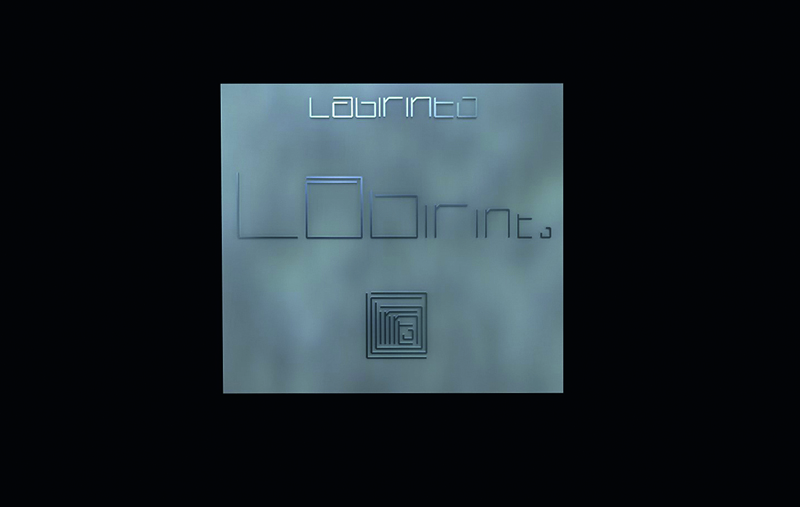
Aldo Spinelli
Italia • Italy
Ever since antiquity, mythology and history have been fascinated by the theme of the labyrinth. The myth of Daedalus and the Labyrinth he created for King Minos of Crete; religious traces in Gothic cathedrals where it was impossible to get lost in the “Paths of Jerusalem” as there was only one way to reach the centre, because there is only one initiatory life, but sufficient to arrive at the centre of our being, to find equilibrium and give a meaning to our existence.
There are many labyrinthine forms, linear or branched, with centrifugal and centripetal routes, unicursal or multicursal patterns... each path is not an end unto itself, it is not a banal disentanglement of branches and crossroads, but a real search for oneself; it does not matter how long we take to walk through it, so much as the physical effort that we devote to it, the only true objective is to follow a path of growth, of choice, of understanding the opportunities we want to grasp in order to understand who we really are and where we want to take our Ego.
In 1972, Spinelli dedicated his Art to this initiatory path, circumscribing the letters of the word Labyrinth to create a new shape, like finding the true key to the reading of this myth; as though the labyrinth were searching for itself, even before letting anyone else enter it. Spinelli adopts this concept and dedicates it to the human race, but also to every single individual... because the life of each one of us, if viewed from above, is, deep down, nothing more than a strictly personal initiatory path, to the extent that each individual has his or her “own” labyrinth, artistically synthesised by circumscribing the letters of our name, because we each have our destiny; the difference lies in having the courage to make choices, sometimes to go back and start again with greater awareness, until we focus on our life and discover our essence.
Modern technology would describe the Labyrinth created using our name and surname as a QR code that virtually leads the spectator to the biography of the “synthesised” subject... but the difference is that there is no App able to read our life a priori and tell us the best route to take...
Serena Mormino, Curator
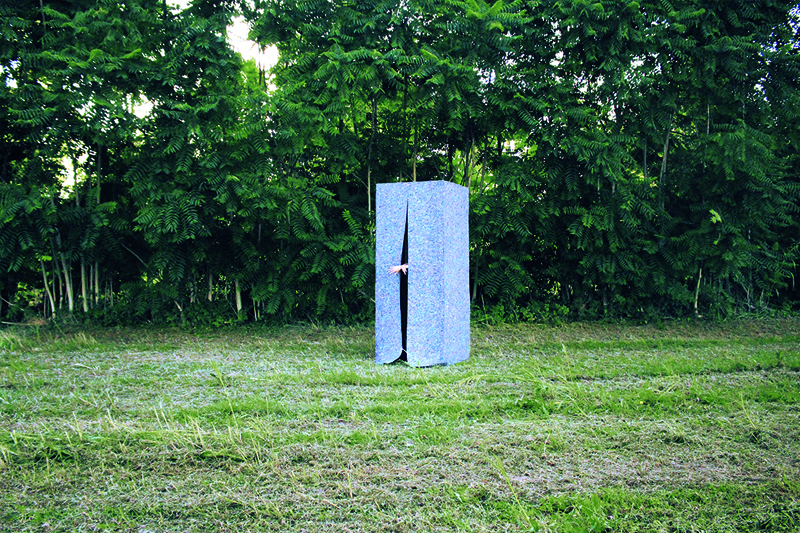
Arianna Spada
Italia • Italy
Arianna Spada’s work is an invitation to transcend. The artist presents a space where the dialectic tension between the subject and the known dramatizes the concept of Being. The visitor is persuaded to abandon his everyday life for a moment, to draw oneself apart from the world to investigate the authenticity of his/her existence.
The person who enters the cabin created by the artist is released from spatial and temporal dimensions where he/she usually stays: the Being is finally free from its condition of “being thrown into the world”, it is open to design its future, to expose itself to be fulfilled or to lose its way. The work is in an open dialogue with the Heidegger’s study about the sense of Being that he illuminates in his seminal work Being and Time.
Spada moves the dissertation to the level of the artistic installation to find a resolution to the Being’s truth question. In doing so, she changes the language - Heidegger found it limiting and he preferred not to complete the book - and starts from his tentative conclusion: time as a possible horizon of any comprehension of Being.
She invites the visitor to experience being-in-the-world to understand what he/she is and what he/she would be, this is the Care, the entirety of Being’s structures. The circular reflection about past, present and future reflects the upper break of the cabin, it is the unique light source in the installation, symbol of lumen naturale that permits to experience the Lichtung, the improvement, to light up the Being’s revelation to the visitor.
Amalia Nangeroni, Curator
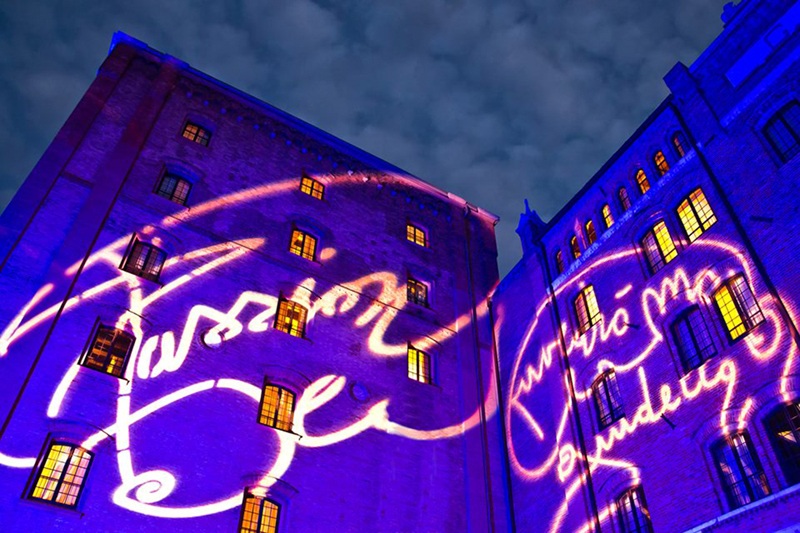
Marco Nereo Rotelli
Italia • Italy
“OPEN has marked the last years of my research.” With these words Marco Nereo Rotelli, winner of the Special Award for a lifetime career, within OPEN, presents his next light installation that, in fact, will inaugurate the eighteenth edition of this important Venetian event that had the merit of bringing sculpture in a city that looks exactly like a magical sculpture.
Rotelli, who is a Venetian artist, takes this statement literally when he decides to illuminate the most representative building of modern Venice, the Molino Stucky, today the Hilton Hotel, with the support of the arts he loves the most, poetry and music. That is how, during the Film Festival, he will film his personal “movie” about arts, by composing and decomposing different languages.
Harald Szeemann said that, with his work, Rotelli is “broadening the artistic context”, which becomes, in this case, an “illumination of the mind”, because its light turns night into a magical day, not governed by the laws of power and reason, but dominated by amazement, magic, emotions.
When Illuminating the Molino Stucky, he will project a wonderful verse written by Ezra Pound, since 2015 marks also the 130th anniversary of Ezra Pound’s birth.
“Will I ever see the Giudecca again? or the light against it, [...]” CANTO LXXXIII, The Pisan Cantos
This reverb is a reversal of tautology that often isolates art within the artistic context: Rotelli aims at an open and evolving concept of art (OPEN!!), and this reverb expands to embrace poets and musicians and to become a celebration.
Hurrah for Venice, the city where everything seems fictional but is definitely true!
Manon Comerio, Curator
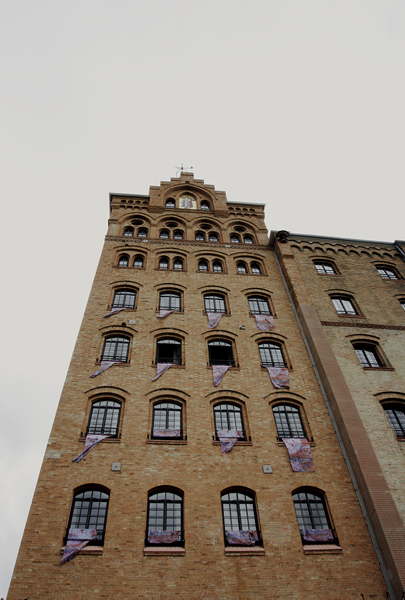
Ri.Co.
Italia • Italy
Stucky 9 may be considered a stage of a “journey” that began in Florence in August 2011, when the walls of the city became the starting point of this long and articulated tour with multifaceted outlines.
In each season the journey reaches a new town and its walls, after Florence came Venice, Burano, Rome and then London... Lille... until the latest journey to Beijing and the enigmatic Forbidden City in the centre, where the mysteries of a city that has always been isolated from the rest of the world reveals exciting stories in materials and colours.
In my shots - which form a collection of works on canvas in a large format, in limited editions – the code 9 contains all the compositional and symbolic geometries.
My work tells histories, captured by the lens and presented in a snapshot. The “macro” shots of the walls enhance the textures of plaster and colours, narrating the stratifications of life in the towns. Their transformation, deterioration, crumbling and reconstruction mark the passing of time. They are “urban skins” which, with their changing colours and cracks, superimpose colours and materials, telling the stages of their history. They are the urban fabric that weaves spaces and architectures, just like in the skin of a human being that vibrates, lives, absorbs and breathes all that surrounds it.
2015 - We are in Venice where, more than elsewhere, architectures are a treasure chest of memories, the interpretation of centuries, celebrations of journeys, guardians of history and stories. This is the background of the site-specific event Stucky 9. Photographs of the Stucky Molino, one of the most interesting examples of industrial architecture; in particular the shot of the only hidden portion of the wall that has not been restored, an untouched witness of human passing. The mill becomes an emotional tactile and visual space, where the colours of the wall, laden with specific features, produce the effect of flags from the pure architectural material with its fluctuating fabric, enveloping everyday events, like a new skin that, from the immaculate architectural material created by man, returns to man with the spontaneous scars that the salt, wind and waters leave in the brick. The texture is multiplied in fractal effects, enfolding the tower of the Stucky Mill to form a new material equilibrium. Flags like “walls” to all effects, which blend with the architectural context but which, when caught by the wind, reveal their natural identity if and when nature itself is allowed to act in harmony with the time that accompanies it.
Ri.Co.
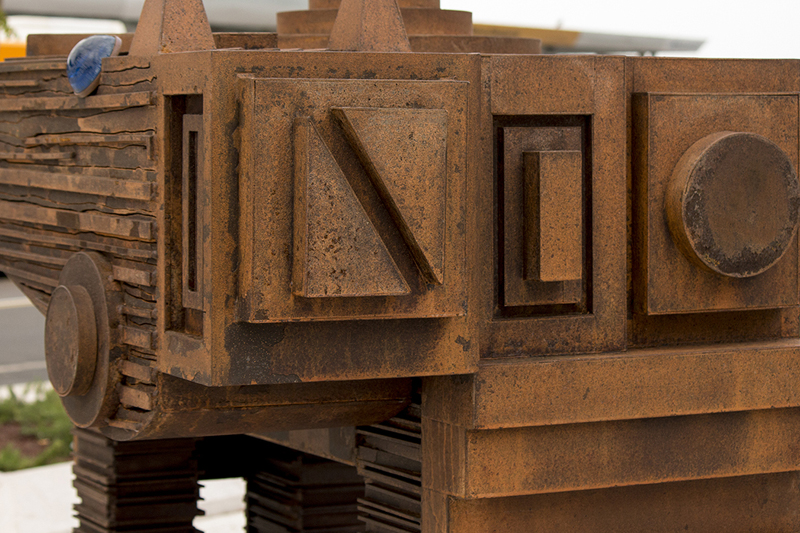
Gianmaria Potenza
Italia • Italy
For the variation of the bodies and geometry he uses, Potenza has understood the importance and meaning of the sphere and especially of the oval in sculpting: that which for us is perceived as a source, an origin, a conclusive container - the ideal, primigenial form which induces the concept of birth. In his linguistic research, in the syntax of his geometric and physical language, Potenza has made these smooth, clean bodies mobile, now travelling through the illuminated space of dancing reflections and shades and, above all, celebrating their mobility. By modifying the static aspect of sculpture, the artist has accomplished a variation of the weight of the bronze body, and has allowed it to constitute a true and cultivated dynamism.
The typically organic parts of his works swarm over the surface of these modules in such an intense way that they could almost make up the entire subject, but now, a far cry from the scored and wounded spheres of Pomodoro (which a distracted eye could easily believe to recognize), Potenza’s sculptures interrogate light and space. The regular meandering (to which various other critics have attributed historical and complex formal derivations, ranging from the muses of the Orient to Viennese artistic decor) flow and reflect light, creating the interactivity and depth of its bronze “skin”, which reveals tactility and becomes plastic narration. It is visual penetration, like the breath of life in the body and in the motion of his sculpture, which reveals the complexity Potenza’s “plastic happening”. Potenza builds an object and, at the same time, denies its basic essence, almost having his sign be ineluctably repeated in a spiral of air, in an atmosphere which transforms weight into lightness. In this way, in his transformation of bronze, giving it even the intense shine of gold, he allows his alchemist’s hortus conclusus to undertake its nth voyage. Sculptures made of bronze: from Venetian waters to new lands they will find the shining sun.
Luca Massimo Barbero